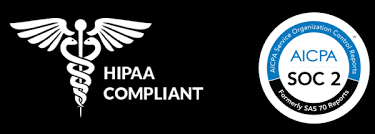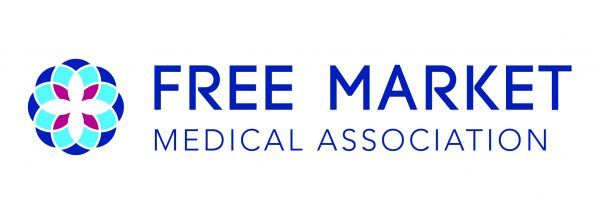A Comprehensive Guide to Self-Funded Health Plans
Self-funded health plans, also known as self-insured health plans, have become increasingly popular among employers of all sizes. In a self-funded plan, the employer assumes the financial risk for employee healthcare costs, rather than paying premiums to an insurance carrier. This approach offers several potential advantages, including greater control over plan design, cost savings, and increased flexibility. However, it also comes with significant financial risk and requires careful planning and management.
The
Health Rosetta framework strongly encourages the use of self-funded health plans, where employers assume the financial risk for their employees' healthcare costs. This approach provides greater control over plan design, spending, and the ability to implement innovative cost-saving strategies.

This comprehensive guide will delve into the intricacies of self-funded plans, covering key aspects such as:
- Understanding Self-Funded Plans
- Key Players in Self-Funded Plans
- The Role of Third-Party Administrators (TPAs)
- Stop-Loss Insurance
- Legal and Regulatory Considerations
- Implementing a Self-Funded Plan
- Advantages and Disadvantages of Self-Funded Plans
- Case Studies and Best Practices
Understanding Self-Funded Plans
In a traditional fully insured health plan, the employer pays premiums to an insurance carrier, which assumes the financial risk for employee healthcare costs. In contrast, a self-funded plan shifts this risk to the employer. The employer directly pays for employee healthcare claims, while typically using a third-party administrator (TPA) to manage the plan's day-to-day operations.
Key Players in Self-Funded Plans
Several key players contribute to the success of a self-funded plan:
Employer: The employer is the plan sponsor and ultimately responsible for the financial well-being of the plan.
Third-Party Administrator (TPA): The TPA handles the administrative tasks associated with the plan, such as processing claims, managing eligibility, and providing customer service.
Stop-Loss Carrier: Stop-loss insurance protects the employer from catastrophic claims, providing financial protection against unusually high medical expenses.
Network Providers: These are the healthcare providers (doctors, hospitals, etc.) that participate in the plan's network and offer discounted rates to plan members.
Pharmacy Benefit Manager (PBM): The PBM manages the prescription drug benefits for the plan, negotiating with pharmacies and drug manufacturers to secure favorable pricing.
The Role of Third-Party Administrators (TPAs)
TPAs play a crucial role in the success of self-funded plans. Their responsibilities typically include:
Claims Processing: Accurately and efficiently processing employee healthcare claims.
Eligibility Management: Maintaining accurate records of plan members and their eligibility for coverage.
Customer Service: Providing support to plan members and employers with questions or issues related to their coverage.
Reporting and Analytics: Generating reports on plan utilization, costs, and trends to help employers make informed decisions.
Network Management: Negotiating with healthcare providers to secure favorable rates for plan members.
Stop-Loss Insurance
Stop-loss insurance is a critical component of any self-funded plan. It protects the employer from the financial risk of large or unpredictable claims. There are two main types of stop-loss insurance:
- Specific Stop-Loss: This type of coverage protects the employer from individual claims that exceed a certain threshold.
- Aggregate Stop-Loss: This type of coverage protects the employer from the total cost of claims exceeding a predetermined amount.
The choice of stop-loss coverage will depend on the specific needs and risk tolerance of the employer.
Legal and Regulatory Considerations
Self-funded plans are subject to a variety of legal and regulatory requirements, including:
ERISA (Employee Retirement Income Security Act): This federal law governs employer-sponsored health plans, including self-funded plans.
State Laws: Many states have laws that regulate self-funded plans, such as requirements for minimum coverage levels and consumer protections.
HIPAA (Health Insurance Portability and Accountability Act): This federal law protects the privacy and security of employee health information.
Implementing a Self-Funded Plan
Implementing a self-funded plan requires careful planning and execution. Key steps in the implementation process include:
- Conducting a Needs Assessment: Evaluating the employer's specific needs and objectives for a health plan.
- Selecting a TPA: Choosing a TPA with the expertise and resources to manage the plan effectively.
- Negotiating with Providers: Securing favorable rates from healthcare providers.
- Developing a Communication Strategy: Educating employees about the plan and its benefits.
- Monitoring and Evaluating the Plan: Continuously monitoring plan performance and making adjustments as needed.
Advantages and Disadvantages of Self-Funded Plans
Self-funded plans offer several potential advantages, including:
- Cost Savings: Employers may be able to save money on healthcare costs by controlling plan design and negotiating directly with providers.
- Increased Flexibility: Self-funded plans offer greater flexibility in plan design and benefit options.
- Improved Control: Employers have more control over their healthcare costs and can make decisions based on their specific needs.
However, self-funded plans also come with some disadvantages, including:
- Financial Risk: Employers assume the financial risk for all employee healthcare costs, which can be significant.
- Administrative Complexity: Managing a self-funded plan can be more complex than a fully insured plan.
- Legal and Regulatory Compliance: Self-funded plans are subject to a variety of legal and regulatory requirements.
What Is a Self-Insured Plan?
A self-insured plan, also known as a self-funded plan, is a health insurance model where the employer assumes the financial risk for providing healthcare benefits to employees. Instead of paying fixed premiums to an insurance company, the employer directly pays for medical claims as they arise, using a designated fund created from employee and employer contributions. This approach offers greater flexibility in plan design and potential cost savings, as employers can avoid the profit margins typically included in fully insured plans.
Self-insured plans are often managed with the help of third-party administrators (TPAs) who handle tasks like claims processing and provider network management, while the employer retains ultimate financial responsibility. This model is particularly common among larger companies, which may benefit from economies of scale in managing healthcare costs.
Case Studies and Best Practices
Many employers have successfully implemented self-funded plans and achieved significant cost savings. Some best practices for successful self-funded plans include:
- Conducting thorough research and due diligence.
- Partnering with experienced and reputable vendors.
- Developing a comprehensive communication strategy.
- Continuously monitoring and evaluating plan performance.
- Staying informed about legal and regulatory changes.
Conclusion
Self-funded health plans can be a complex but potentially rewarding option for employers seeking to control healthcare costs and improve employee benefits. By carefully considering the factors discussed in this guide and working with experienced partners, employers can successfully implement and manage a self-funded plan that meets their specific needs and objectives.



